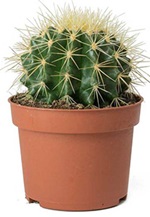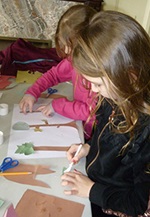Botanic Garden and Attenborough Arboretum
Live online sessions
Booking
The sessions are led by the Botanic Garden Education Officer. We have two available sessions:
- Topic delivery using resources from the Botanic Garden; thirty minutes duration; cost £25
- Topic plenary and question and answer session; thirty minutes duration; cost £25
One or both sessions can be booked. If booking both sessions there can be a time gap in-between so children can complete their work.
Email the Botanic Garden Education Officer to book a session.
Science
Plants Year 1/2 
- Identify and describe the basic structure of common flowering plants including trees
- Describe how plants need water, light and a suitable temperature to grow and stay healthy
Learn about the different parts of plants looking at real examples and explore what plants need to grow and stay healthy.
Habitats Year 2
- Identify that most living things live in habitats to which they are suited
- Describe how different habitats provide for the basic needs of different kinds of animals and plants and how they depend on each other
Start by considering what plants need to grow and stay healthy. Then look at a selection of plants that live in deserts, high mountains and rainforests and how they have adapted to survive the conditions.
Plants Year 3
- Identify and describe the functions of different parts of flowering plants
- Explore the requirements of plants for life and growth and how they vary from plant to plant
Identify the parts of a flowering plant and learn about the functions of each part. Then look at a selection of plants that live in deserts, rainforests and poor soil and how they are adapted to survive with access to too little or too much of what they need.
Life Cycles Year 3
- Explore the part flowers play in the life cycle of flowering plants including pollination, seed formation and seed dispersal
Look at the different stages of the flowering plant life cycle. See real examples of seeds and learn about the different ways seeds are dispersed including an example of the world’s biggest seed!
Life Cycle Changes Year 5
- Sexual and asexual reproduction in plants
- Compare the life cycles of plants in their local environment and compare with other plants around the world
Start with revising the different stages of the flowering plant life cycle including examples of non-British plants. Look at examples of asexual reproduction - rhizomes, runners, tubers and bulbs - and artificial methods.
Adaptation and Evolution Year 6
Identify how plants and animals are adapted to suit their environment and how adaptation can lead to evolution. Look at a variety of plants from different habitats - woodland, desert, rainforest, high mountains, poor soil and aquatic; how they have adapted to their environment; how this has led to evolution.
Art
Islamic Art KS2
The session will begin with learning about the connection between plants and Islamic Art. Using the selection of plants from the Botanic Garden the children will then look and sketch examples of leaf patterns and tendrils. A demonstration will be given of how to use a small piece of card and scissors to create a stencil of one of their sketches. This is then used to create a repeating pattern in the style of Islamic Art. A printable outline will be sent for the children to use. 
Rainforest KS2
A variety of rainforest plants will be looked at from the Botanic Garden. We will discuss how they have adapted to their habitat. An opportunity to sketch leaf shapes will be given and a demonstration on how to use these to create Henri Rousseau collages.